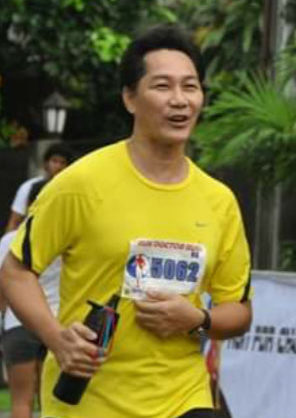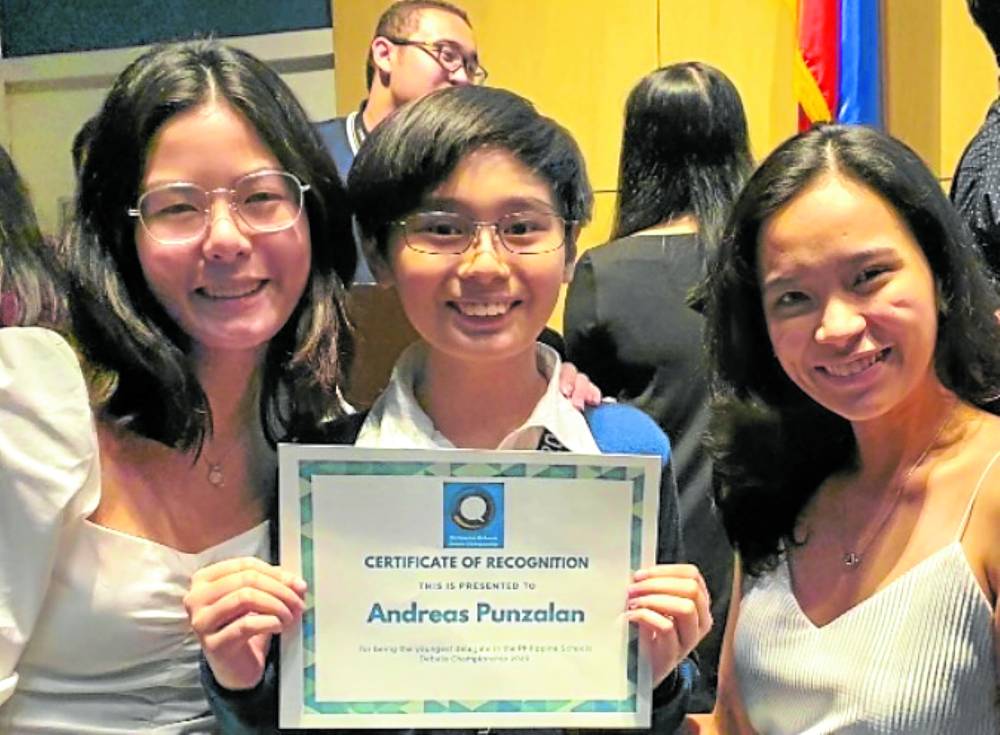When orthopedic surgeon Robbie Meriales found himself in the intensive care unit (ICU), his lungs infected by the new coronavirus disease (COVID-19), he sought out the spirit of his mother, who died in 2017.
“I talked to her: ‘Ma, huwag kang magpapakita sa akin, ha? Huwag mo akong susunduin. Hindi ako sasama sa iyo.’”Such levity helped him survive the ordeal, he told Lifestyle in an email interview.
He also had “visions of my wife and two daughters. And many people prayed for me.”
He believes his faith in God and prayers saved him. “From the very start of my admission, to the time of my ICU stay, to my return to a regular room, I always prayed the rosary. My rosary was wrapped around my wrist all the time for easy reach. I prayed and prayed,” he recalled.
Another factor behind his survival, he said, was his being “a runner with a set of good lungs and a strong heart.”
Persistent, low-grade fever
Meriales, 55, recounted having persistent, low-grade fever around March 13 to 15: “It was occurring throughout the day, relieved temporarily by paracetamol. I had no cough, no sore throat, no colds or runny nose. Just fever at the start. I was even able to do my regular 5.5-km runs. I had more time for it during the lockdown.”
But on March 18 or 19, he realized he “couldn’t run anymore. I felt tired easily. I just walked. My wife, also a doctor, recorded my respiratory rate at 30 per minute during rest. She listened to my chest and said she heard crackles when I breathed in. Still no cough or sore throat. The fever was persistent.”
His wife had a cough, but no fever. On March 22, they decided to go to Makati Medical Center, one of several hospitals where he holds clinic.
In the emergency room, he underwent chest X-rays, nasal and throat swabs, blood tests. His chest X-rays initially showed “pneumonia in both lung fields, a little worse on the left. Then the doctors decided to admit us in “separate, negative-pressure isolation rooms.”
His attending doctors administered antibiotics, anti-malaria, antiretroviral, mucolytic and anti-asthma/anti-bronchitis medicines, plus vitamin C, zinc, and a drug to prevent heart attack.
While confined, the couple kept track of each other through Facebook Messenger video. “She seemed to be improving, but I seemed to be worsening,” he said. “I had no appetite. My arterial blood gases showed reduction in oxygenation, so they started me on oxygen through a nasal cannula on March 23. A repeat chest X-ray on March 23 showed progression of the pneumonia in the left lung, but a little clearing on the right.”
On March 24, the pneumonia got worse. His breathing was manageable, but he still had fever and chills. That night, his pulmonary doctors gave him a drug to suppress the symptoms of the infection. The fever subsided.
But another chest X-ray March 25 showed further worsening of both lungs, which he said looked like the beginning of acute respiratory distress syndrome (ARDS).

Confession, absolution
“At that point, I knew what would happen,” he said. They would be doing intubation very soon. I gave it no second thought. I signed the consent form immediately. I then called my priest friend for confession, and he granted me absolution. I was ready.”
He was wheeled into the ICU in the evening, the same time tests confirmed he was COVID-19 positive. His wife tested negative.
He was intubated and was hooked up to a mechanical ventilator. Medications were given to increase his urine output, dry up his lungs, relieve the pain in his throat caused by the intubation, and keep his blood pressure up.
In the following days, more medications were given to prevent complications.
In time, his body regained strength. “I exercised in the ICU. I did straight-leg raising exercises, isometric exercises for my legs and thighs, range of motion exercises for my ankles, knees, hips, shoulders, elbows and wrists. I turned side to side to prevent bedsores . . . Chest X-ray monitoring also showed gradual clearing up of my lungs. My infectious disease doctor told me, ‘Your runner’s lungs saved you. You have a lot of lung reserve.’”
On March 31, he was extubated. On April 1, he tested negative for COVID-19 and was served a mechanical soft diet, though he ate with slight difficulty due to the strain on his throat caused by intubation.
Inner strength
On April 2, he was out of ICU, and was discharged on April 5, Palm Sunday.
Looking back on his ordeal, he said he finally learned what it’s like to be a patient—this was his first time to be hospitalized.
“I learned to remove all negativity, to embrace life fully,” he said. “I found an inner strength that I never knew I had. I also saw how tightly this disease makes a bond between me and all the others afflicted with it, when I learned that my wife’s cousin died April 4 of COVID-19 while in another hospital. We were in the same fight together, and that was the only time I cried in the hospital. I never cried for myself, even during my worst time in the ICU.”
He also never lost his sense of humor. “I was able to draw a cartoon about the hideous hospital food,” he said. “Strangely, the Dietary Service called me up a couple of hours after I posted my cartoon on social media. They asked me what I would like to have for lunch, stir-fried beef or chicken tinola. I asked for chicken tinola, and requested that the soup be served hot. Apparently, my sweet jolly nephew saw the cartoon. He is from the administration of Makati Med, and he exerted extra effort to send better food. My wife and my dear friends also sent over good food after my ICU confinement.”
While recuperating, he said he’s been thinking a lot. “It’s a cliché, but everything happens for a reason. I think God gave me a new mission. I now have antibodies against the virus, and I can give it to someone who needs it. I have already pledged to donate my blood for convalescent plasma therapy. Doctors can give my plasma to moderate to severe cases of the disease.
“I cannot go to the front line. But I can give my blood. And I can do it again and again and again.”








































